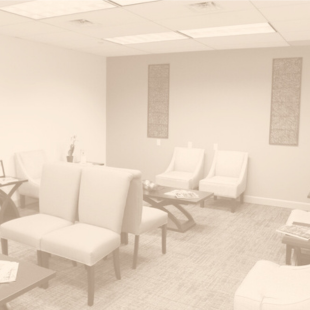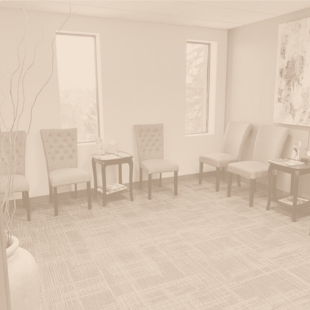Breast Deformity Correction
Procedure Process
& Ideal Candidates
Breast deformity correction surgery, often referred to as breast reconstruction or corrective breast surgery, is a procedure aimed at improving the shape, size, symmetry, or appearance of the breasts. The process typically begins with a consultation where Dr. Antimarino evaluates the patient’s breast anatomy, skin quality and overall health. The patient can discuss their goals and expectations for surgical results. Dr. Antimarino can explain the various surgical options which may include a breast augmentation, breast reduction, breast lift or a combination of these procedures.
Prior to surgery the patient may be required to undergo medical tests to ensure they are fit for surgery. The specifics of the surgery depend on the individual case and the desired outcome. Common techniques include a breast augmentation where implants or a fat transfer may be used to increase breast size. A breast reduction removes excess breast tissue and reshapes the breasts to reduce their size and improve symmetry. A breast lift reshapes the breast tissue and repositions the nipple to achieve a more youthful and lifted appearance. After surgery the patient may require pain medication and antibiotics may be prescribed to manage discomfort and reduce the risk of infection. Follow-up appointments are scheduled to monitor healing and address any concerns.
What To Consider
Deformity Types
Physical Considerations
Treatment Options
Schedule Your Developmental Breast Deformity Consultation
During your consultation, Dr. Antimarino will walk you through a series of questions to determine your concerns, goals and expectations. Dr. Antimarino will discuss with you any medical conditions you may have or treatments you are going through, what medications you may be taking, and any previous surgeries. Be prepared to discuss the outcomes of a breast procedure to address any developmental deformities and have the doctor take photos of your breasts for a more accurate evaluation.
Pre-Op Care
Depending upon a patient’s age and medical condition there may be preoperative laboratory testing required. This will need to be completed within 2-4 weeks of surgery and is typically covered by the patient’s insurance. Patients are asked to maintain their usual activity level and body weight from the time of consultation to their surgical date. Patients are required to stop smoking, vaping, and the use of nicotine patches, gum, and marijuana one month prior to surgery and a minimum of one month post-surgery. Patients are also required to stop using weight loss medications 2 weeks prior to their surgery. Surgery may be canceled if guidelines are not followed.
Frequently Asked Questions
What causes breast deformities?
To understand the underlying reasons behind conditions like Poland syndrome, tuberous breasts, or asymmetry we can look at causes that may include genetic factors, hormonal imbalances, developmental abnormalities, or trauma.
Can breast deformities be corrected?
Many individuals with breast deformities seek to understand if there are treatment options available to improve the appearance or functionality of their breasts. Depending on the specific condition, surgical interventions, such as breast augmentation, breast lift, breast reduction, or a combination of these three, may be options.
Is there a specific age for interventions to be addressed?
The most common age for intervention is 17-18, when the breasts have stopped developing and the patient is no longer in puberty. Surgery can be addressed at any age after puberty. Prosthetics may help with appearances before intervention if desired.
What are the psychological impacts of breast deformities?
Individuals with breast deformities often experience emotional and psychological effects, including low self-esteem, body image issues, and even depression. Addressing these impacts may involve psychological support as well as medical treatment.
Are there non-surgical treatments for breast deformities?
Some conditions may benefit from non-surgical interventions such as physical therapy, hormone therapy, or prosthetics. Exploring these options can provide individuals with a range of choices based on their specific needs and preferences.
Can breast deformities affect breastfeeding?
Women with breast deformities may have concerns about their ability to breastfeed. Understanding the potential challenges and discussing strategies with Dr. Antimarino can help manage expectations and provide support.
What specialists treat breast deformities?
Depending on the nature of the deformity, treatment may involve consultations with plastic surgeons, breast surgeons, geneticists, or other specialists. Coordinated care among these professionals ensures comprehensive evaluation and management.
Testimonials
What Our Patients Are Saying
Dr. Antimarino gave my daughter back her confidence! He heard our medical concerns, communicated his professional advice in a way we all understood and cared for our daughter with utmost compassion and excellence. She left her surgery with the tiniest scar but, most importantly, with the biggest boost in her self-esteem. We are forever blessed and grateful for Dr. Antimarino’s hard work, compassionate patient care, and utmost integrity. Thank you!
Monroeville Patient
All around perfect experience! All of the staff is very knowledgeable and friendly. I am very pleased with the time I spent here. I highly recommend!
My overall experience seeing Dr. Antimarino and the entire staff has been the best experience I have ever had. Everyone there makes you feel so welcome and like you are family. From start to finish, they are in contact with you ensuring you are healing properly and recovering. I would recommend them to anyone who wants to have a procedure and wants to be confident in their choice. They listen to what you want and that is something a lot of other doctors lack.
RATEMD
Surgery & Post-Op Care
Surgery is done most commonly under general anesthesia as an outpatient procedure in a hospital or accredited outpatient surgical center. The length of surgery will vary depending upon the type of surgery or combination of procedures needed.
Patients are sent home with a light dressing and a postoperative support bra. The support bra will be worn for 5-6 weeks. Drains may be used in some cases, which will be monitored by the patient’s caregiver and reported to Dr. Antimarino. The dressings will be changed in the office at the first postoperative visit. Patients may return to work or school in 1-2 weeks. Exercise can be resumed in 3-4 weeks.
Related Procedures
Our Locations: Breast Deformity Correction in Pittsburgh

Shadyside
5301 FIFTH AVENUE, SUITE A,
PITTSBURGH, PA 15232
GET DIRECTIONS
Fri: 8 am – 4:00 pm

Monroeville
117 FOX PLAN ROAD, SUITE #300,
MONROEVILLE, PA 15146
GET DIRECTIONS
Fri: 8 am – 4:00 pm

